Castlevania: Lords of Shadow Review
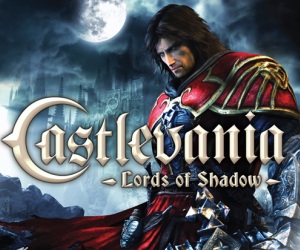 Game: Castlevania: Lords of Shadow
Game: Castlevania: Lords of Shadow
Developer: MercurySteam and Kojima Productions
Publisher: Konami
Available on: Xbox 360 and PlayStation 3 (Reviewed on Xbox 360)
Castlevania is back folks and it has finally been updated for the present day consoles. This game was originally going to be a remake of the first Castlevania, but Konami decided to re-boot the series to distance itself from previous games. It was originally called “Lords of Shadow”, with no mention of Castlevania in the title. Konami say this was done to keep their plans to radically change the direction of the Castlevania mythology a secret and to prevent the announcement of the game from upstaging their other series release at the time, Castlevania Judgement. Konami recruited MercurySteam along the way (whose previous titles include Clive Barker’s Jericho) to develop the game and they even got the original Big Boss himself, Hideo Kojima, to help out with his Kojima Productions team.
The Castlevania franchise has been going for many years now (producing gaming gold in the most part) and has obtained a large fan base. I wouldn’t call myself a psycho fan of the franchise, but I do tip my hat with respect to it. So, have Hideo and MercurySteam pulled off a blinder and produced an epic Castlevania game or is this new title a massive pain in the neck? Read on to find out.

STORY: Castlevania: Lords of Shadow is set in southern Europe in the year 1047. The “end of days” are approaching, humanity has been cut off from heaven and the souls of the dead are in limbo. Evil monsters now roam the land and many believe that God has abandoned them. However, the Brotherhood of Light believe that someone or something has cast a powerful spell and cut off the heavens from humanity. The Brotherhood are an ancient order devoted to protecting the innocent from the forces of evil. They send out many of their most skilled Knights to destroy the evil that roams the land, but none of them succeed. Enter Gabriel Belmont, the games main protagonist, who is voice acted by Robert Carlyle.
Abandoned as a child (Gabriel not Robert!), he was taken in by the Brotherhood. From an early age he excelled at combat and developed into a skilled fighter. He is prone to dark moods and occasional ambivalence, but these were quelled by his childhood sweetheart (and later wife) Marie. One day his wife was murdered and that affected him immensely. It filled him with rage and a burning desire for vengeance. You find out, with the help of the old God, Pan, and the ghost of Marie that three evil beings, known as the “Lords of Shadow”, are responsible. Gabriel sets out to destroy the Lords, wreaking havoc in his wake.
The story of Lords of Shadow is excellent from beginning to end. It is very well written, highly detailed, enjoyable and more importantly, believable…or at least it is as believable as a story about vampires can be. It has many twists and turns along the way, which always keeps you guessing, with some “WTF?!” moments thrown in for good measure. Each level begins with a narrative spoken by Sir Patrick Stewart (who plays the character Zobek in the game) and sets the scene of the story nicely before the action begins. He also gets the word “oblivion” in nice and early as well! If for some reason you missed something in the story, good old Patrick will set you straight in the next narrative sequence. All of the characters have detailed histories that you can read during the game, which makes the whole experience more engrossing. Each character has his/her own personality to and their profiles can be accessed once you have met them in the inventory menu. All in all, it is brilliant story, but beware…all is not what it seems!
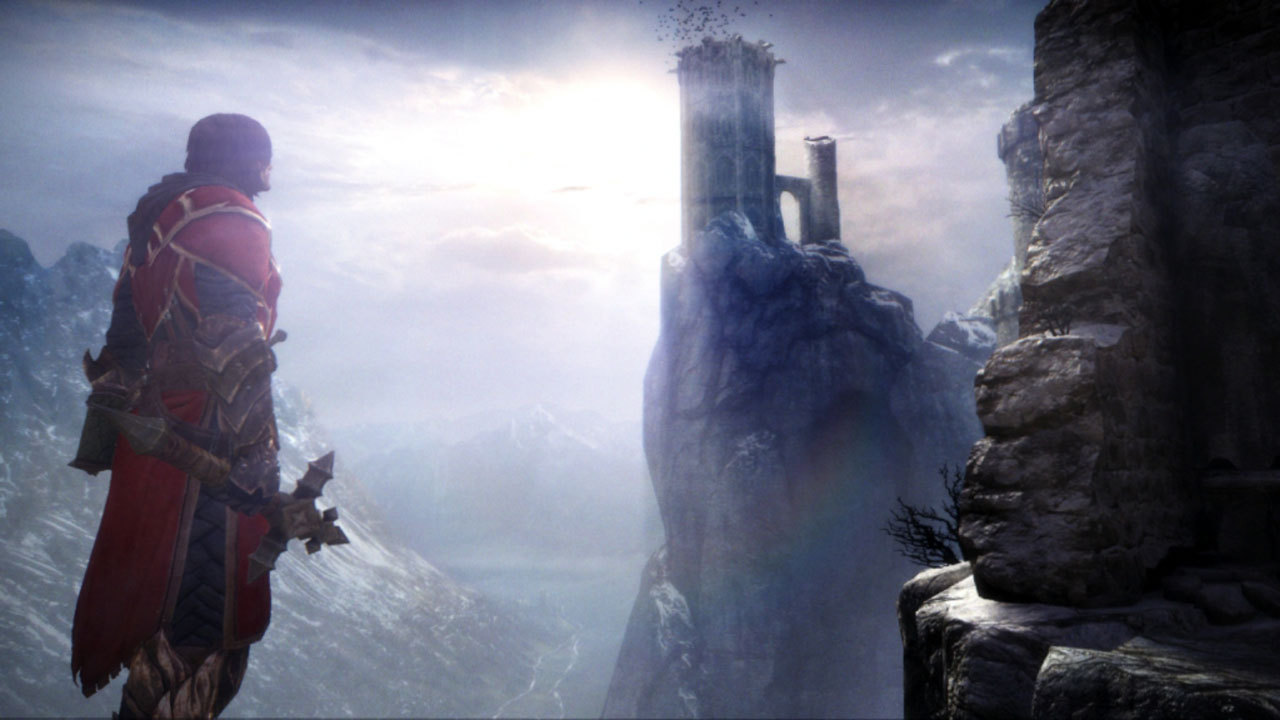
GRAPHICS: Sweet, Jesus this is one beautiful game! You can tell an amazing amount of work has been put into the graphics. From the deep forests, underground catacombs, tombs and snowy wastelands, to the immense gothic architecture of castles and desolate forts in forgotten lands. It is an epic effort from the MercuryStea, and the amount of detail they have gone into is absolutely immense! You can purchase the original artwork that inspired the missions as you finish them and it is some of the best artwork I have seen in a game to date!
The character models are brilliant as well. Everything from the faces to the clothing is very well presented and highly detailed. However, I did notice that some of the characters faces in certain scenes looked a little shoddy and basic, Zobek being the main culprit. The character movement is well designed, fluid and fast throughout. Every single character in the game moves realistically and, to be honest, it is a joy to watch.
The lip syncing for the characters ranges from very good to average. For instance, when Gabriel speaks, the majority of the time everything looks spot on. However, at times, I found the syncing to be slightly off and it made Gabriel look like he was a ventriloquists doll or something.
SOUND: They have brought out the big guns for this one. Using a 120 piece orchestra and 80 person choir, the musical score is just as brilliant as previous Castlevania games. It definitely adds to the drama of the game and a superb companion to the fantastic storyline. The voice acting in the game is great too. Robert Carlyle makes Gabriel seem more believable and Patrick Stewart is (as always) brilliant, his commanding voice suits the character of Zobek down to a tee. Jason Isaacs (Lucious Malfoy from Harry Potter) is also present and voices a major character, but you’ll have to play the game to find out who!
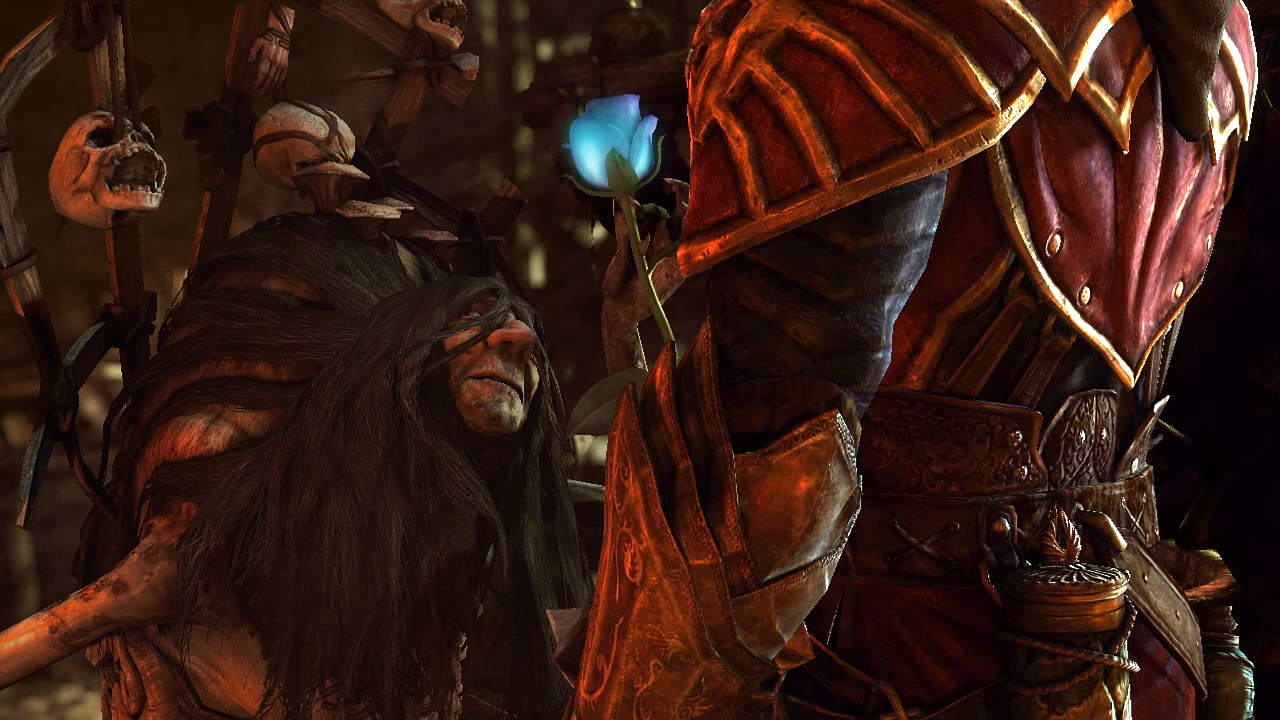
The sound effects are also very good, with every bang and crash sounding as it should. From the light hits to the massive booms when you bang out a heavy hit at the end of a combo, the sound gives you the feeling that you are doing it. The only odd sound effect I found to be odd was the noise that Gabriel makes when he’s climbing. Obviously when climbing anyone would make grunting noises, but I wasn’t sure if he was in constant pain or sexually aroused! Confusing and slightly amusing at the same time.
GAMEPLAY: The combat system for this game is brilliant. It is similar to God of War, which you can tell they drew inspiration from, but MercurySteam had added in their own uniqueness to the title. For example, when you grab an enemy in God of War you press a button repeatedly to beat them to a pulp. In Castlevania the system is totally different, you use quick time events to pull off any sort of grab move. Even the quick time events are different in Castlevania. In God of War, you have to press the correct button indicated on the screen. This works well most of the of the time, but if you weren’t ready, you could potentially die. In Castlevania, you can press any of the face buttons. You have two circles, one stays the same size, the other starts off big and gets smaller. You have to press the button when the shrinking circle is on or inside the same sized circle. f you are ever caught out, you have a better chance of pulling the quick time maneuver and because of this system, you can avoid annoying deaths. There are individual button quick time events, but these usually have you tapping a particular button furiously, so you have that time to get it right.
The game borrows ideas from other game also, but much like the examples given above, it them its own. For example, quite early on in the game you face come up against Titans and this might make you panic a little, but the key to defeating them is very similar to encounters in Shadow of the Colossus. I found these battles to be brilliant and a huge amount of fun. Defeating these massive “creatures” leaves you with a great deal of satisfaction.
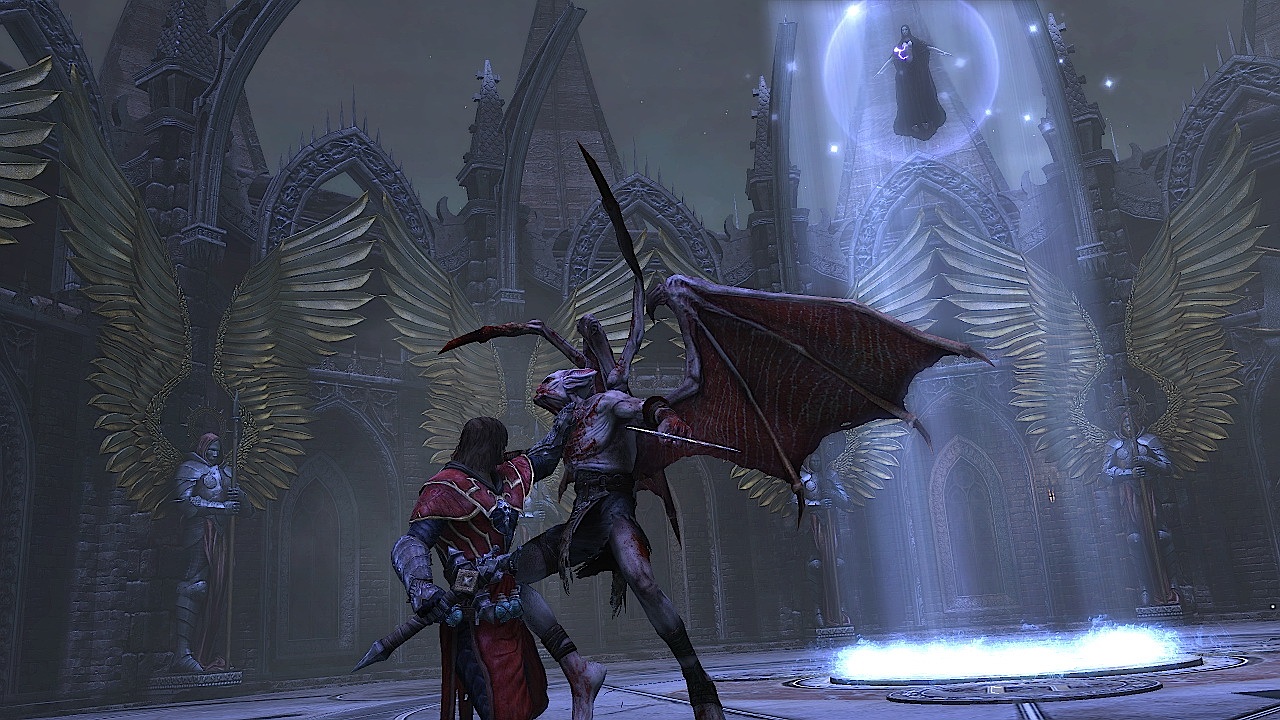
From the start right until the end of the game, you only have access to one main weapon and it is called the combat cross or as i like to call it, the holy multi-tool of doom. It is essentially a crucifix with a chain whip, which you use to bitch slap the hordes of Satan. As you progress through the game, you obtain additions to the cross. For example, the first one you get is the grappling hook, which will help you get around the world, but you can also use it to grab enemies and bring them towards you. All of these upgrades give the cross the edge over the enemy and help dish out the pain. You also collect expendable items as you go through the game. You start off with silver throwing knives, which allow Gabriel to deal with enemies form long range. As you progress further, you get access to green fairies, who pin down the enemy so you can smash their faces in without having to dodge. You also get access to holy water and magic crystals. These crystals are very handy when you get overwhelmed during boss fights, as they summon a big nasty demon with (it has to be said) horrible tits to help you deal some major damage.
There are many combos to purchase in the game too. When you defeat an enemy, you gain experience points and via the inventory screen you can pick which combo you can spend thse points on new combos. Also, every time you gain a new piece of armour, you gain more combos for future purchases. To add to the combat system, later on in the game you gain access to light and shadow magic. You will notice when you play, locations do not have that many statues that allow Gabriel to replenish his health. This little problme is solved by using light magic. When you activate it, every successful blow you land replenishes your health, as well as dishing out a little extra damage. When you activate shadow magic, you boost the amount of damage you can dish out and pull off some brilliant looking combos. When you activate it and start beating enemies, it gives you an amazing rush. You might even find yourself telling the enemies to go forth and multiply elsewhere!
Both the light and shadow magic can amplify the use of most of your expendable items as well. For example, using shadow magic with the throwing knifes make them explode on impact. As you find the expendable items, you can go into the inventory screen and find what these do with and without magic, which I thought was quite helpful. Also, if you go to the characters section of the inventory and snoop around a little, you will find a list which include every monster you have fought in the game so far. Each monster has a short description and there is even a chart telling you what weapons you should or should not use against the foul beast. This is a great little addition, as it allows you to plan your attacks based around the enemy or enemies you are up against.
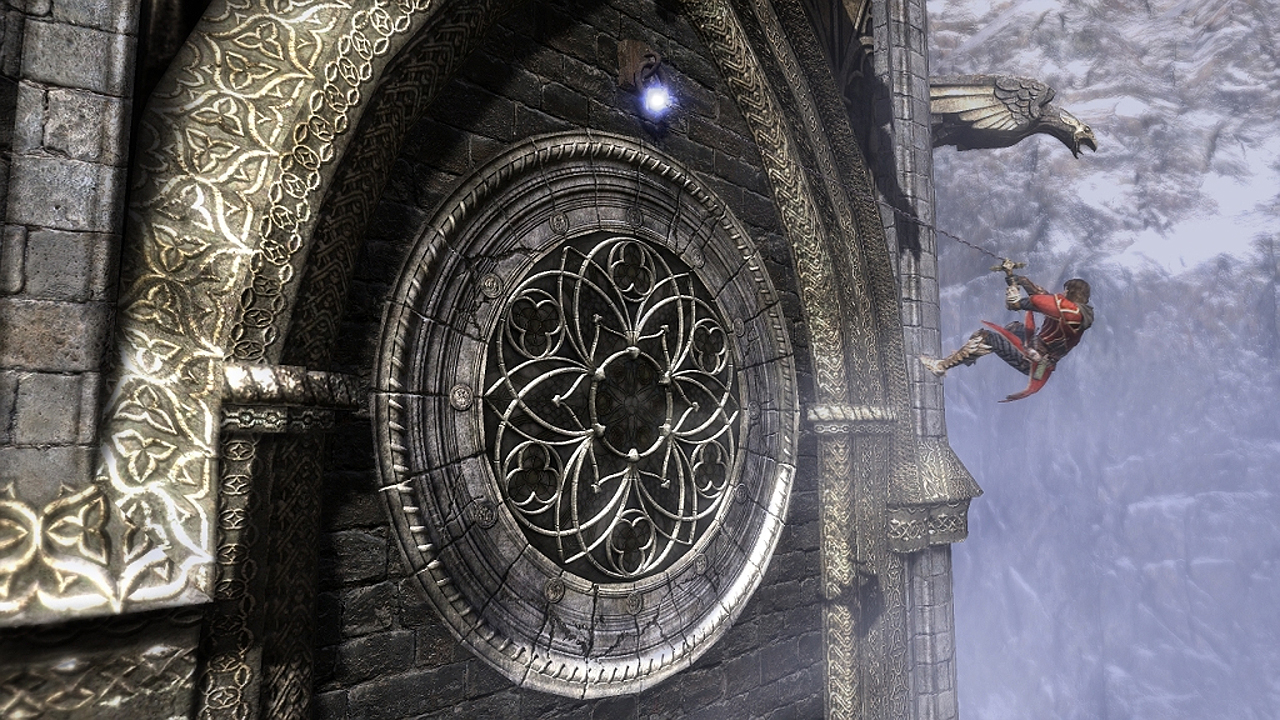
Some parts of the game can be quite long, but the majority of the levels in each chapter are nice and short. This reminded me a bit of the first Devil May Cry game, with the only difference being that the levels in Castlevania are not set in the same location almost every single time! Every mission you take on is different and exciting, with new challenges around every corner. The puzzles are also really good, ranging from relatively easy to quite taxing, but solvable. Before you start one you find a scroll on a deceased Brotherhood member, giving you a hint on how to solve the puzzle. The scroll also gives you the option of finding out how exactly to solve the puzzle, but if you go down that route, you lose out on experience points, so it is definitely in your best interest to solve the puzzle without cheating!
The only major bad points in regards to the gamplay would be fixed camera angles and the annoying Chupacabras. With regards to the camera angles, for the most part they are fine, but at times I found it difficult to see where to go and fell to my death unnecessarily. Now, let’s talk about the Chupacabras. There is a special place in reserved hell for the person who thought of these annoying little creatures. When you encounter one, it steals all of your magical items and leaves you with only the cross. To get your items back, you have to play a really annoying game of hide and seek. As you are try to find him, he tells you if you are hot or cold whilst mocking you. To add to that, whilst this is all going on, the enemies keep on coming, so if you need health, you will not have your light magic to replenish it. It was fine the first time I faced one, the second time I could deal with it, but after facing another four or five of them, I was slightly enraged. Dirty little bastards!
LONGEVITY: Castlevania: Lords of Shadow is rather big game, but as previously mentioned, the missions are in bite sized chunks, so in theory you can quite easily get through the game without too much trouble if you have a break or two in between. It took me about four days to complete on and off, but if I had a major session, I think I could’ve smashed it out in two days.
There is a good twenty plus hours of gameplay in Castlevania: Lords of Shadow, but even when you complete the game…it’s not really all over. Every single level in the game has a trial, where you are given a particular objective to complete. These trials range from the quite easy to the ridiculously hard, it’s safe to say they will be keep you going for quite a while. Add to that, collecting missing items and finishing the game on the hardest setting…you have one massive game.
VERDICT: Despite the occasional awkward camera angle and other slight niggles, I absolutely adored Castlevania: Lords of Shadow. With its high attention to detail, great gameplay and superb visuals, it gripped me from beginning to end and left me aching for more. If you love your action/adventure games, you need this game in your life. Hell, even if you are only partial to them, you should still give it a go. It’s a purchase you will not regret.





